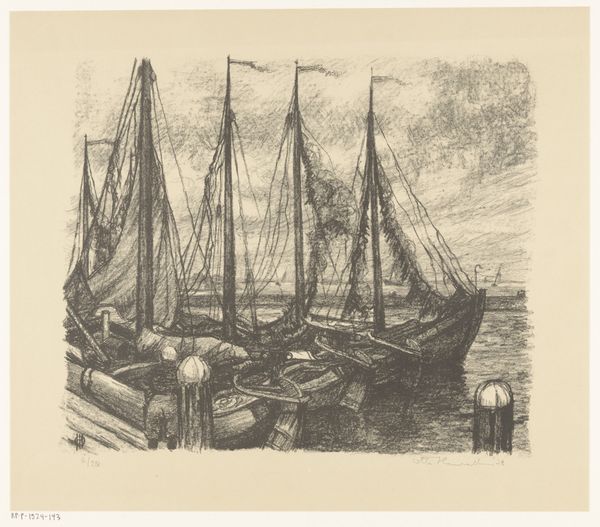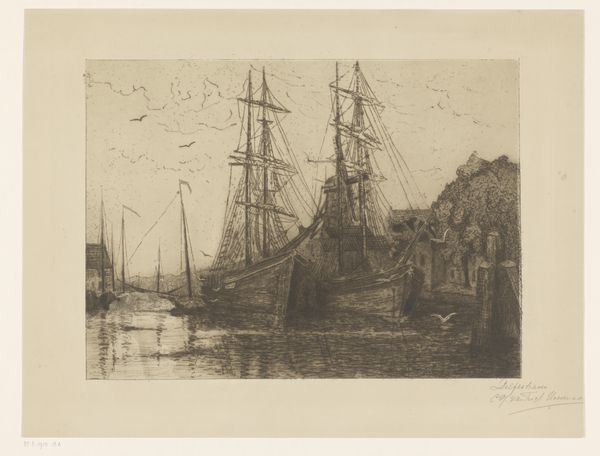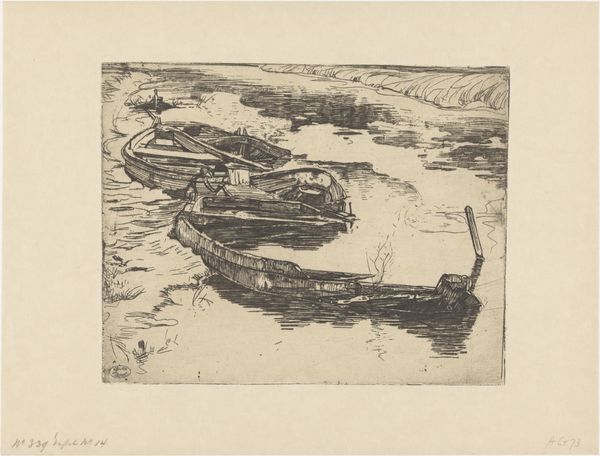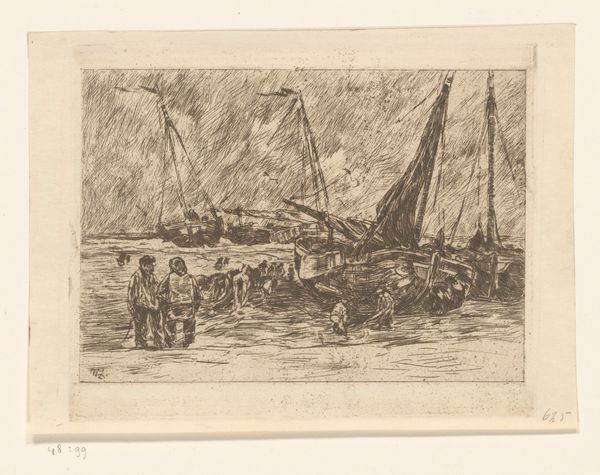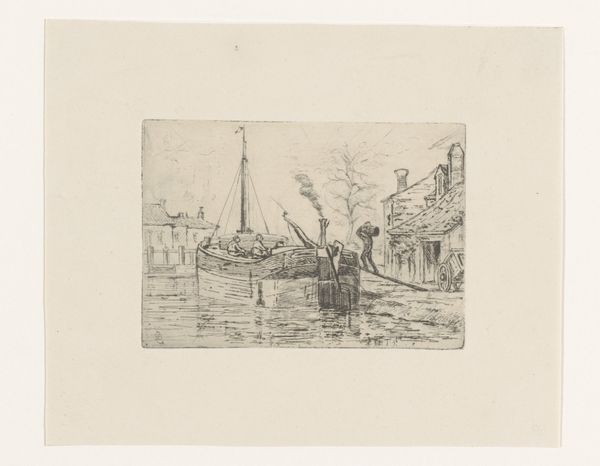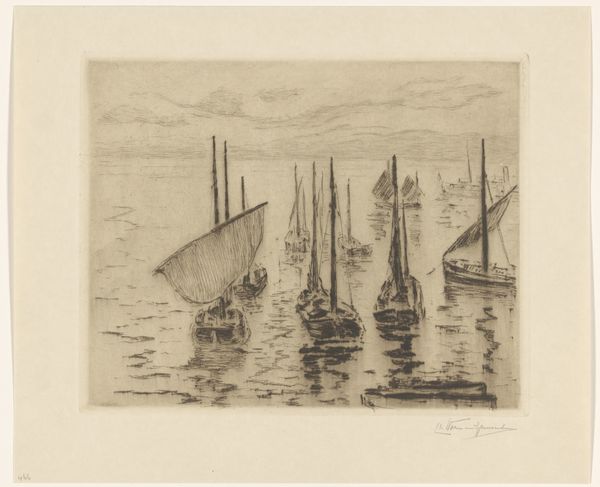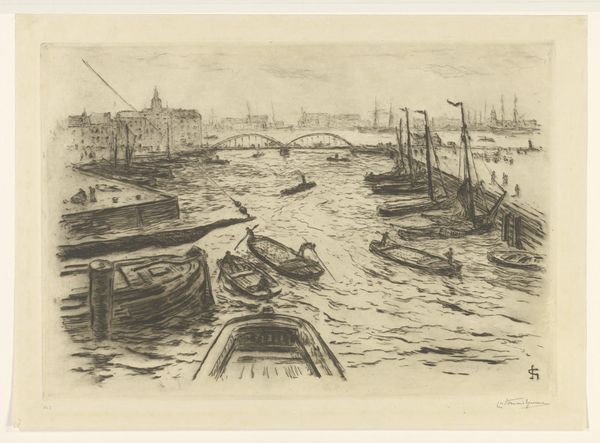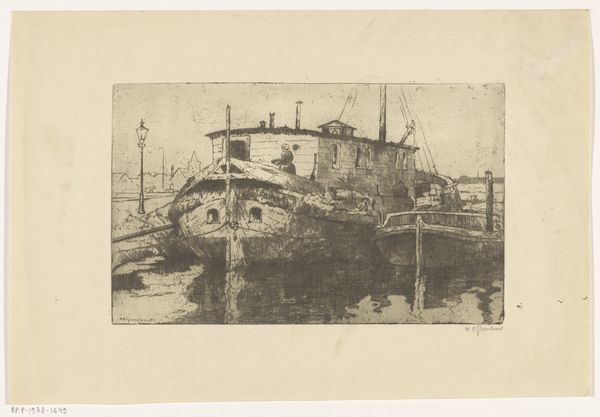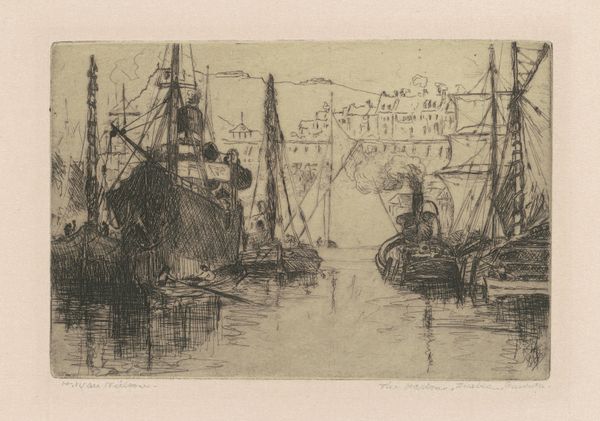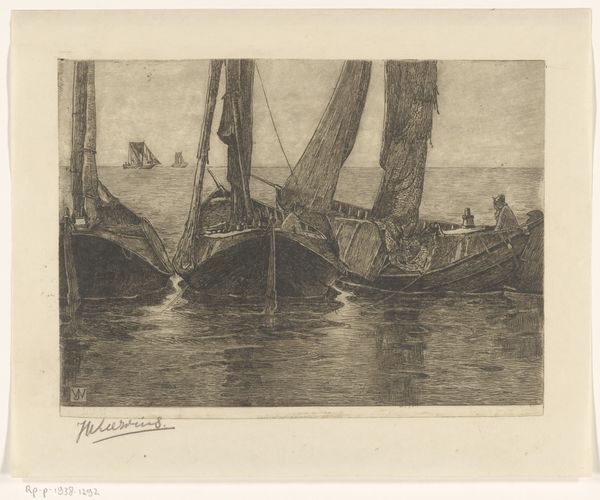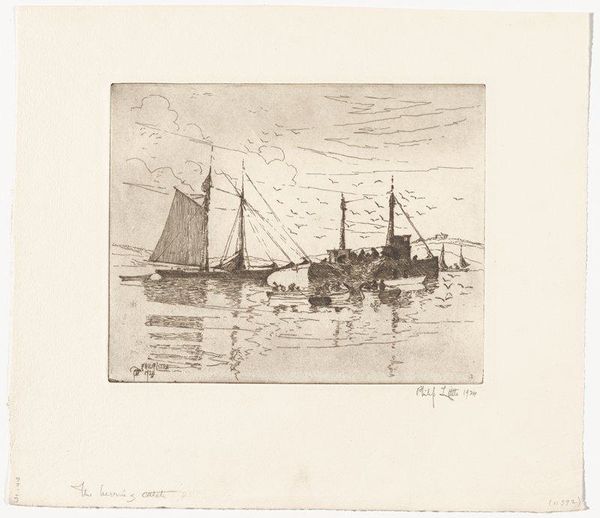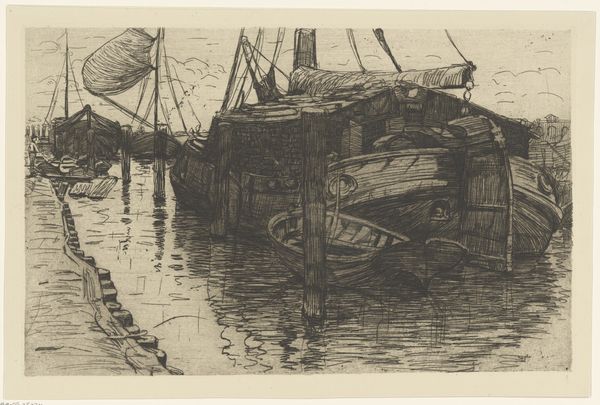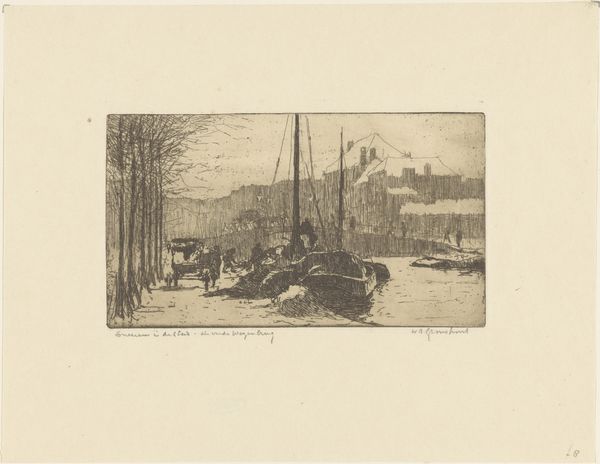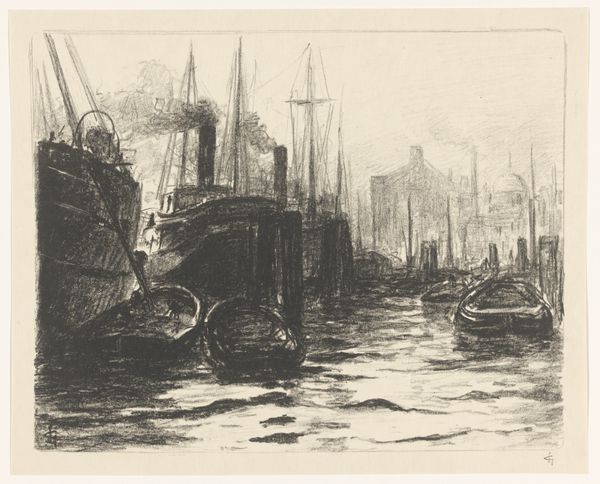
print, etching
# print
#
etching
#
landscape
#
etching
#
cityscape
Dimensions: height 150 mm, width 200 mm
Copyright: Rijks Museum: Open Domain
Editor: This is Pieter Dupont's "Tjalk in de Baarsjes in Amsterdam," from around 1895, done as an etching. The scene feels incredibly detailed, showing what seems like a grounded barge. I’m struck by the level of texture achieved in this print, it’s almost overwhelming. What do you see when you look at this? Curator: What I see is an intense focus on the materials and labor of daily life in late 19th century Amsterdam. Look at the Tjalk itself - the rough-hewn planks, the visible wear and tear, the tools casually strewn about. Dupont isn't just depicting a boat, he's showing the means of transportation, potentially a dwelling. Consider the work that maintains that structure, the labor required to navigate those canals. Editor: So you're focusing on the reality of life embedded within the artwork? Curator: Exactly! Etching itself is a laborious process, too. Acid biting into metal to create this image… Dupont chose this method for a reason. What’s being consumed here? The raw materials transformed, the daily grind reflected, or a specific kind of labour power? Editor: That makes sense. I was so caught up in the details of the image itself, I wasn't considering the materials and work involved in both the scene and creating the artwork. Are those windmills behind the Tjalk another clue? Curator: Absolutely. They represent another industry, another layer of labor and consumption transforming the landscape. Dupont is interested in how things are *made*, both within the image and the etching itself. Editor: Thinking about it that way completely changes my view of the artwork. I appreciate that. Thanks! Curator: And I, reflecting with you, appreciate how examining process reveals deeper social narratives!
Comments
No comments
Be the first to comment and join the conversation on the ultimate creative platform.
